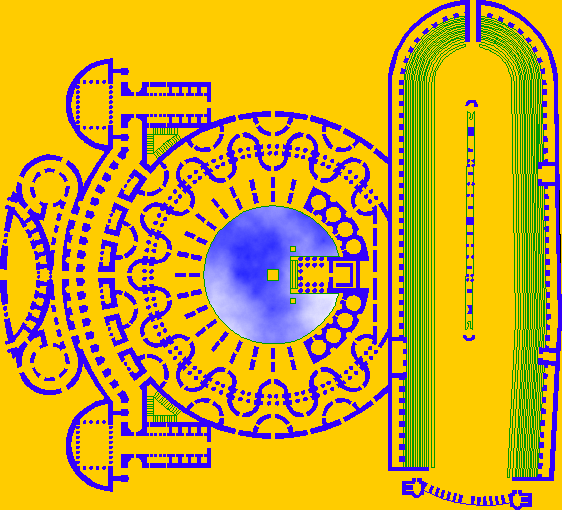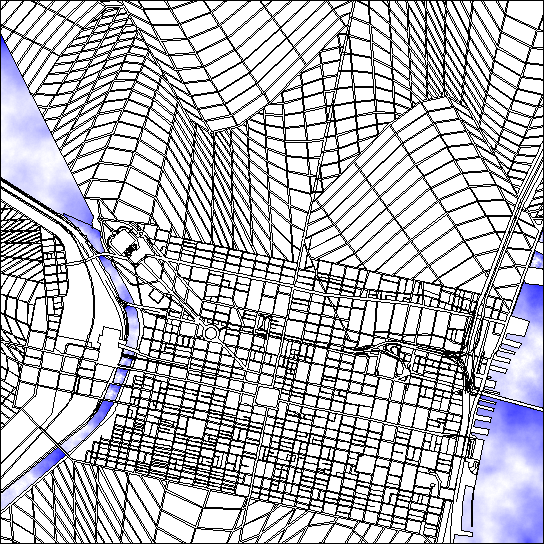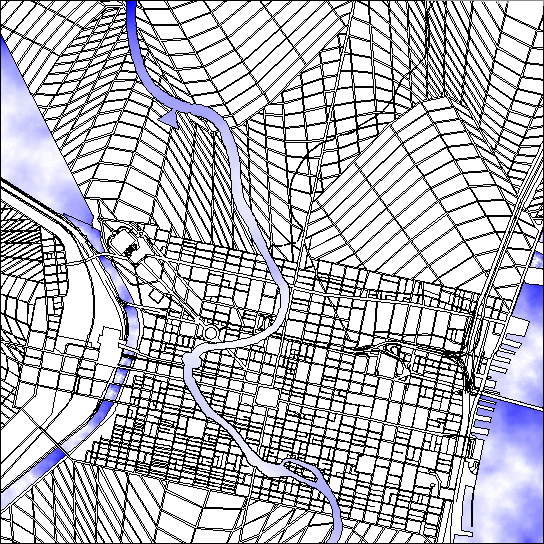1999.09.15 12:37
architecture in cyberspace?
First, I said, "I'd hate to see the virtual merely become a reflection of the real." This means I'd hate to see architects/designers/theorists neglect an investigation of the inherent qualities of the virtual/cyber realm, where they can find virtual/cyber's own "natural" order. For example, one huge difference between architecture in the real world and architecture in cyberspace is that in cyberspace actual buildings are redundant, indeed a real auction house that does what eBay does couldn't even be built. Another difference between real architecture and cyber architecture is that one goes to real architecture whereas cyber architecture comes to you. It may simply be that "real" architects have to begin also thinking about what it means to design architectures that go to people.
On a personal level, I like that www.quondam.com is a museum of architecture that is not a building, and, moreover, a museum of architecture that goes all over our planet.
Perhaps the purest architectures of cyberspace are precisely those architectures that can't be built [except in cyberspace].
2000.01.16 14:14
Re: architecting
Real scale deals primarily with physical limits and the coordinated representation/manifestation of those limits, while in virtual scale limits are 'fluid' and/or 'meandering' and/or 'oscillating' and/or 'undulating', etc..
It would seem then that the difference between real scale and virtual scale is in how each scale respectively treats and/or renders limits. Real scale and virtual scale do not treat or render different realities, however, because all reality is relative to the limit of its container.
2000.01.31

Ara Martis etc.
| |
2000.08.04 22:49
Re: Alex Galloway, Rhizome Editor, Reports on Siggraph 2000
Galloway wrote:
Most of the activity at last week's SIGGRAPH 2000, held this year in New Orleans, boiled down to a single fetish: the search for the perfect simulation.
reply:
Albeit a minority viewpoint, I nonetheless believe that "virtual reality" would more fulfill its potential by offering something other than a "perfect simulation" of what already exists. For example, "virtual reality" could possibly let us experience what a completely abstract reality is like, or perhaps what a completely inside-out reality is like -- basically allowing us to experience some "other" realities.
Then again, cloning will be a big part of this millennium, so cloned realities might just be the norm as well.
2000.08.19
Ichnographia Quondam 2392

preliminary urban grid

superimposition of the Tiber
| |
2001.01.14
More Tedious Stuff (Design Process Type)
Paul states:
This is where the "function" enters the genesis of the parti. Kahn spoke of "served" and "servant" spaces, of course. The secondary spaces are not "celebrated," but become embedded in "conceptual poché," which the parti diagrams as solid, leaving only the celebrated, or publicly experienced, spaces as "spatial figure." The figure-ground gestalt is fundamental to this basic design strategy, applied to urban design by Colin Rowe and his school, but derived from Beaux Arts practice.
Steve replies:
I don't see Paul's capsulation of Kahn's notion of "served" and "servant" spaces as altogether correct. Rather, it is more of a (convenient) pedagogical interpolation based on a hybridization of "served and servant" (Kahn) with "figure/ground" (Rowe). Two of Kahn's buildings that most manifest the "served" and "servant" notions are the Richards Medical Research Building (Philadelphia, 1957-60) and the Salk Institute (La Jolla, 1959-65). In both designs the "served" and the "servant" are each clearly articulated, and one could go so far as to say that it is more the articulation of the "servant" spaces that manifest the "served" spaces. Neither of these two buildings employs what might be described as poché.
I now wonder whether Paul's interpolation exemplifies a wider ranging interpolation throughout architectural academia since Kahn's practice, hence a not necessarily true interpretation /proliferation of Kahn's message /meaning vis-à-vis "served" and "servant". The notions of "served" and servant" are first to be applied to the program, i.e., the building program is divided into those spaces that serve and those spaces that are served. The form of the building then arises out of the articulation of both the "served" and the "servant", and the ultimate design is the integration and/or inter-relation of the two types of "spaces".
Perhaps the only slanted aspect of Kahn's notion of "served" and "servant" spaces is the underlying notion that some spaces are privileged while the other spaces are not privileged. And perhaps this is precisely where the misinterpretation of "served" and "servant" actually comes from. In reality, however, Kahn somehow managed to "privilege" virtually all the spaces of his buildings. [And perhaps it can be said that Kahn was therefore very good at working the mediocre.]
Just now I'm wondering whether the grammatical terms of "active" and "passive" might be an interesting extension of the served and servant notions, i.e., with served being the passive and the servant being the active. It might be interesting to sometimes analyze buildings by identifying those parts/spaces that are active (doing the acting) and those parts that are passive (being acted upon). This point of view might help alleviate the "privilege" factor.
2001.01.16
virtual architecture
I agree wholeheartedly that cyberspace offers a "parallel" realm within which to design and 'build'. The term I've used instead of parallel is 'other', as in the best architecture in cyberspace is something other than the architecture of the real world. I too am not interested in seeing the architecture of cyberspace merely being a reenactment of the real world. The real world of architecture already does an excellent job of reenacting itself.
What you say about amazon.com being mostly akin to catalogue shopping is true, but there is still more to amazon in that the catalogue is hypersized, and that many of the additional services such as automatic recommendations of similar products and free out-of-print book searches make for good usability. You didn't say anything about eBay, however, which is much more 'other' than the heretofore traditional auction house.
Oddly, I've never read Neuromancer, but that might be because when the book was published (1984) I was already well immersed in Intergraph 2D and 3D cad--drawing and designing in cyberspace was already a fact for me then, and definitely not a fiction. (Should I read the book now?)
|